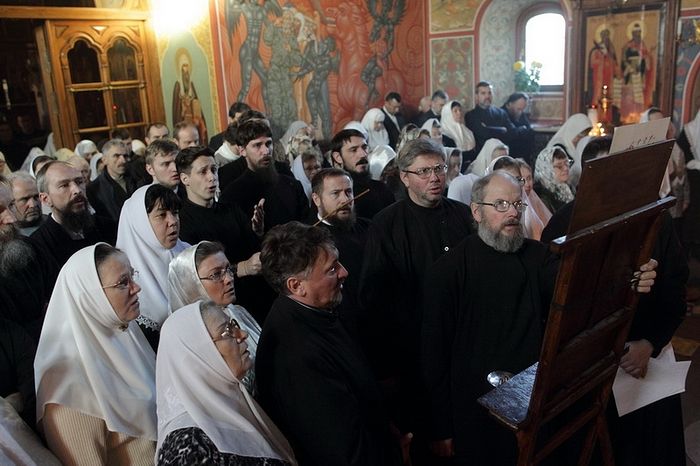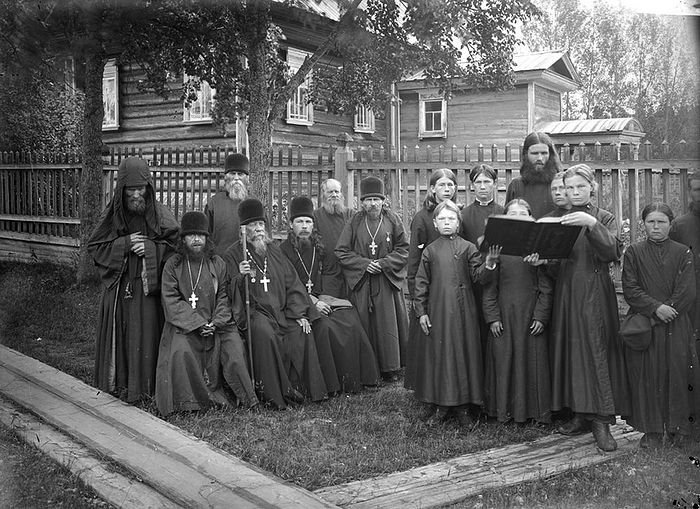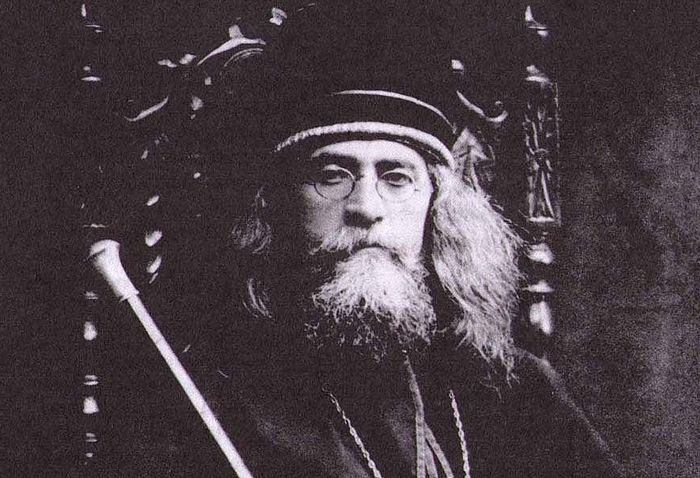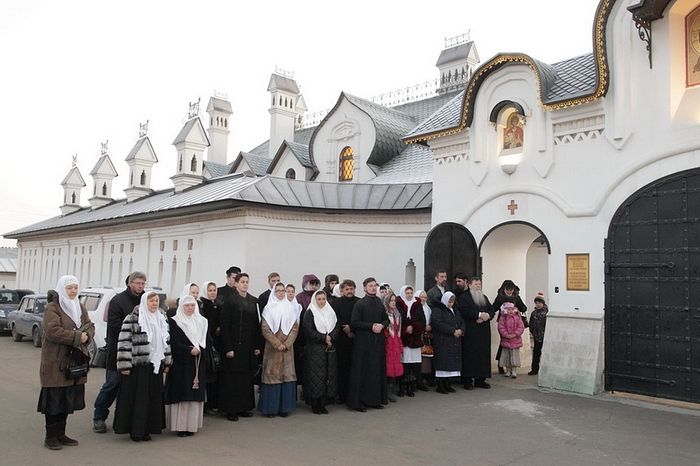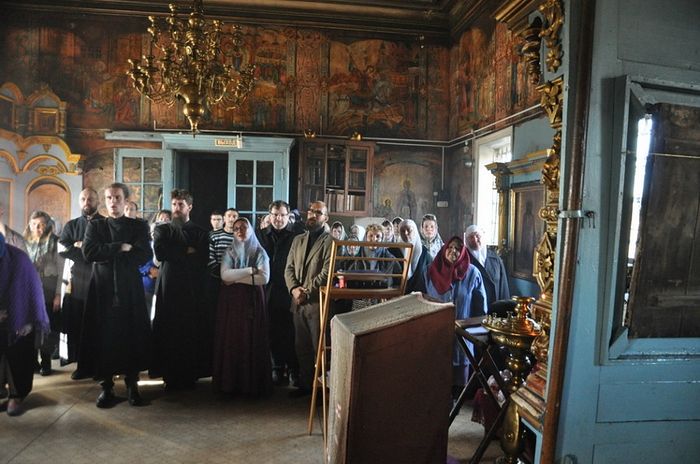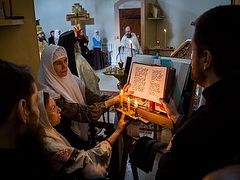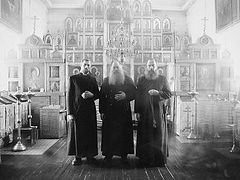In the last article, we got acquainted with an Edinoverie parish, describing its basic features, but we received a number of questions and decided to answer them today in order. The Edinoverie is a very interesting and deep phenomenon in the Russian Church, not fully understood until today—a sort of bridge between ancient Russia and the Russian state from Peter to the present day. Note the definition of the Edinoverie of Hieromartyr Simon (Shleev), the first Edinoverie bishop:
“Opposed to the schism in Russia, the Edinoverie are a set of parishes of the Russian Church, one with it in faith, but distinguished from it in ritual. The Edinoverie are a section of the Old Believers, accepted into communion with the Russian Church on the basis of unity of faith… The Edinoverie are a reconciliation of the Old Rite with the Russian and universal Church.”
It’s important to draw your attention to the Old Rite. It won’t be a sin if you call the Edinovertsi “Old Ritualists,”1 “Orthodox Old Ritualists,” or “ecclesial Old Ritualists,” for greater understanding. Indeed, they are parishes which adhere to a liturgical order that existed in Russia before the reforms of Patriarch Nikon. The Edinovertsi are Old Ritualists in the Church, her fullness.
The official date of the establishment of the Edinoverie is considered to be 1800. On October 27, the conditions upon which the Old Believers were received into communion with the Russian Orthodox Church, with the comments of Metropolitan Platon (Levshin), were approved by Emperor Paul I. However, the rules contain a number of restrictions, preempting the possibility of the Orthodox becoming Edinovertsi. For example, the parishioner of a regular Orthodox church was permitted to receive Communion from an Edinovertsi priest only when facing imminent death.
It should be noted that the Synod conceived of the Edinoverie as a missionary project; Metropolitan Platon looked upon the Old Believers as “ignorant sinners.” And, of course, they expected that after some time the Edinoverie parishes would fully merge with the Church, even transitioning to the New Rite. However, this did not happen. The Old Believers who voluntarily stood for unity understood the impairment of being outside of eucharistic communion with the Mother Church. Worship according to the early-printed books and strict adherence to ancient Russian parish life—in the church, family, and personal life—was for the “zealots of ancient piety” unified with the dogmas of a monolithic faith.
The position of the Edinoverie markedly strengthened in the reign of Nicholas I, although, alas, not without administrative intervention and pressure upon Old Rite representatives. It is a mistake to blame the rank and file Edinovertsi for the coerceive methods of “liberation” of churches and monasteries. The government’s administrative-bureaucratic, clerical-soldier approach to “healing the schism” did its job. Monasteries on the Irgiz River, in Chernigov, and in Nizhny Novgorod and in other pockets of the empire became Edinoverie. Parishes appeared in Moscow, at Rogozhsky and Transfiguration Squares, in Old Believers’ centers. By the end of Nicholas I’s reign, there were 179 Edinoverie parishes, with 200,000 Edinoversti.
In the second half of the nineteenth century, the Edinovertsi appealed to the Synod with a number of requests, involving not just a change to certain points in the rules of 1800, but proposing a radical revision of the relationship of the government to the Old Rite and Edinoverie. Here there was the proposal to create an All-Old Rite Church, and a request to reconsider the Edinoverie rules of 1800, and a question about bishops. The Synod left the majority of all the principal requests without change, or they introduced completely unprincipled corrections. However, within 100 years, the Edinoverie had already turned into a definite power, with their own foundations and traditions, active position, and then the desire to become full members of the Church—which, I must say honestly, has not yet been felt.
The first quarter of the twentieth century was undoubtedly a period of flowering for the Edinoverie, and this time is inextricably bound up with the name of Hieromartyr Simon (Shleev), the first Edinoverie bishop and indefatigable personality of the Orthodox Old Rite. The topic of a bishopric for the Edinovertsi was actively discussed in this period, with first a number of diocesan and then three All-Russian Congresses which established first one, and then several Old Rite hierarchs… The Edinoversti are no longer a “missionary project,” but are the fullness of the Church. The revolutionary turmoil forced Patriarch Tikhon to put Edinoverie bishops in general Orthodox sees, thus being subsequently assured of their zeal, durability of spirit, pastoral skill, and readiness to give their lives for Christ. A Edinoversti Congress was held in 1927, in which, among other questions, was discussed the necessity of developing new dioceses for the Edinovertsi, and a negative attitude was expressed towards the schismatic Higher Church Authority. Soon after, in 1929, the Holy Synod removed the bans on the Old Rite. Unfortunately, conditions in the country led to the Edinoverie parishes being very soon dispersed among the general Orthodox. We know very little about the life of the Edinoversti in the Soviet period.
From the early 1990s until today, the number of Edinoverie parishes has grown from the three preserved in the former Soviet Union to four dozen. Parishes are filled mainly by the internal migration of conservative parishioners of the Russian Orthodox Church, gravitating towards Russian history and culture. Individual Old Believer families and even entire communities sometimes convert to the Edinoverie. Every year, during the International Nativity Readings in Moscow, there is a section dedicated to the Old Rite of the Russian Orthodox Church, at which, as a rule, representatives of the majority of Edinoverie communities of the former Soviet Union (and sometimes of the far abroad, for example, the U.S.) gather. Orthodox priests and laity who worship according to the New Rite do not pass by such events. Old Believer representatives have become frequent guests and even speakers. Held in late January 2017, the Nativity readings section gathered a rather large number of representatives of Edinoverie parishes, including new ones, which testify to the clear growth of interest in “the precepts of holy antiquity.” The question was raised about an Edinoversti bishop, which we don’t have yet…
And what’s next? What is the Edinoverie today, the Old Rite in the Russian Orthodox Church, and what do we need all of this for? Perhaps it’s worth it to openly answer all these questions, moreso to show people who are ignorant of the full value of such a movement in the bosom of the Church.
In our day, as some 200 years ago, the Edinoverie represent a set of parishes of the Russian Church which adhere to pre-schism liturgics and ancient Russian piety. In fact, it’s the same Christianity, but, of course, it definitely raises the bar of spiritual-moral requirements for oneself. Services in these parishes are celebrated without abbreviations; the singing, icons, and the whole prayerful atmosphere are quite concentrated, strict, and ascetic, such that the services approach monastic services. Edinovertsi communities are in actuality, and not simply legally, communities, inasmuch as every parishioner knows one another, talks, and helps one another. There is a conscious striving for a certain ideal of Christian living. It works out, of course, as with all people, maybe in different ways, but the presence of such a striving makes itself known.
The Edinoverie allows you to truly, as a in monastery, break away from worldly vanity, immerse yourself in a prayerful condition, look at the Orthodox faith through the prism of greater strictness with yourself, and pull yourself up to a personal spiritual height. At an Edinovertsi parish, you feel the living definition of a community, which is extremely important in our days. Whole families are integrated in these communities, and children grow up in the whole of the Christian tradition. Undoubtedly, this spiritual experience, preserved by the Edinoversti, is useful in our day for all children of the Russian Orthodox Church. This in no way means that parishes must suddenly switch to the liturgical Old Rite. The rites, of course, are equally salvific, inasmuch as development and some change is unavoidable in the Church. But that treasury of spiritual energy that has been carefully preserved in the Old Rite over the course of many centuries, should become the heritage of all Christians, and be able to be used by all. Some are drawn by the singing, others will better see a practical structure of a community, and for some, some everyday moments will become understandable in the Christian life, tested and tried by the experience of several generations.
The Edinoverie, born in difficult conditions, after a century and a half of persecution against the adherents of “ecclesial antiquity” has achieved its equality in the Orthodox Church after another century. It earned respect in the twentieth century, suffering severe persecution along with all Christians; it seemed to have died, but resurrected like a phoenix from the ashes, silently bearing its service, gradually ascending, spreading its wings, preparing to take off and manifest to Russia another celebration of the Russian spirit.

